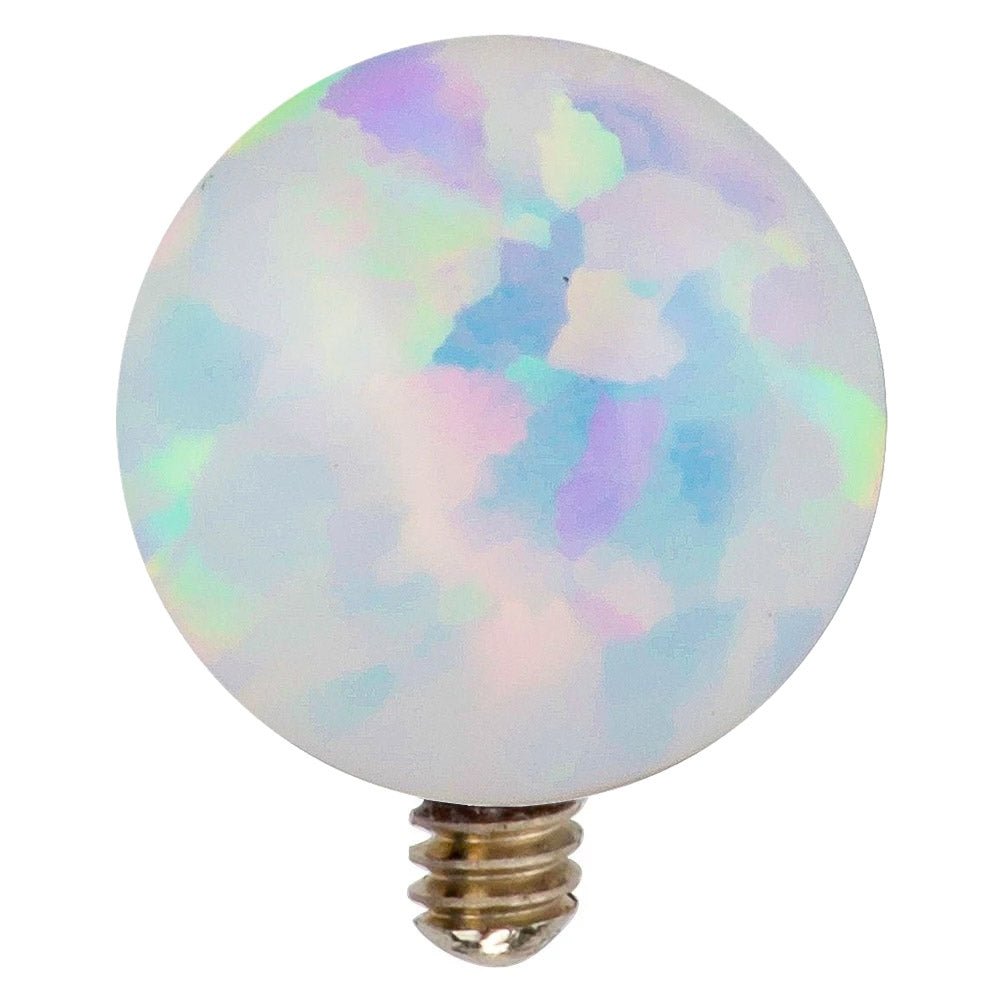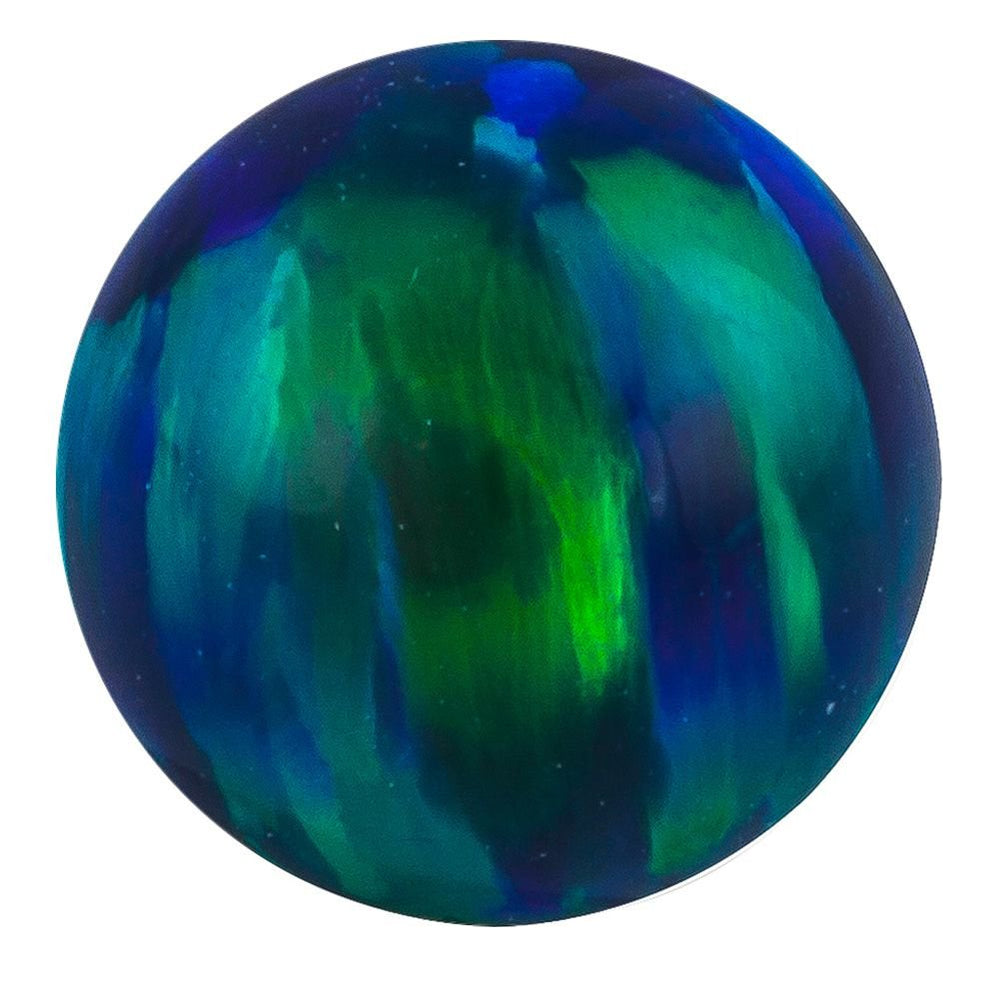Dermal Piercings: Everything You Need To Know


Dermal piercings and surface piercings are often confused with each other. While they offer similar aesthetics, they are actually completely different piercings. The surface piercing is more of a “normal” piercing, and it features entrance and exit points on top of the skin. The dermal piercing, however, is a single-point surface piercing, meaning that there is only one puncture in the skin without an exit point.
A dermal piercing stays in place via a dermal anchor that is placed beneath the skin. The two most common types of dermal anchor include a round anchor—a small round, flat disc—and a footed anchor—an elongated base that looks a little like a foot sticking beneath the skin. The footed anchor tends to be more secure, but they do go a little further beneath the skin.
Both anchor varieties often come with holes in them. The holes allow the healing tissue to grab onto the anchor so that the anchor won’t move as much and has less of a risk of infection. Some people prefer anchors without these holes, but your dermal piercing might not last as long.
You can get a dermal piercing pretty much everywhere, which is part of the reason why it’s gained popularity. When choosing your dermal piercing location, you need to keep in mind that those done in bonier areas, like the sternum or cheekbone, often see rejection and migration because the skin in these areas isn’t very thick. Additionally, your piercer will need to be aware of nerve endings and veins in the areas where you want to get pierced.
Since dermal piercings are a little more invasive than other piercing types, they have unique considerations. Here’s everything you need to know about dermal piercings.
Related Products
View allHow Much Do Dermal Piercings Hurt?
This is one question that’s not easily answered. You can get a dermal piercing almost anywhere, and the pain level will greatly depend on where you get pierced. Beyond that, your personal pain threshold and piercer’s experience level will have an effect on how much pain you feel.
In order to get a dermal piercing, your piercer will either use a piercing needle to open a hole beneath the skin by separating the tissue, or they will use a dermal punch to remove a small chunk of tissue beneath the skin where the dermal anchor will be inserted.
While the dermal punch may seem more painful, most report that the dermal punch is far less painful than using a needle. This is because the dermal punch is so sharp, and the skin is removed so quickly, people barely notice. Many piercers will highly recommend this method. However, in some states, dermal punches are illegal unless conducted by a medical professional, so make sure that it’s an approved method in your state.
Dermal Piercing Healing Process
Even though the dermal piercing is more invasive than other piercing types, healing times are actually quite short. You can expect to spend 1 - 3 months on healing.
Aftercare Rules
General dermal piercing aftercare doesn’t stray too far from normal aftercare practices. Like any new piercing, you should conduct sea salt or saline soaks twice daily, and it’s a good idea to invest in a piercing aftercare spray for spot cleans throughout the day.
Here are some additional tips specific to the dermal piercing.
Keep extra care not to bump or snag the piercing. Dermal piercings often appear in parts of the body that see a lot of action, like the arms and hands. As it’s healing, it can be difficult to protect your new piercing from daily hazards. Wear bandages when you’re participating in activities that could cause your new dermal piercing harm. Keep your dermal piercing covered with clothing that’s loose enough that it doesn’t put pressure on the piercing but tight enough that it won’t tug on the jewelry. If you do bump or snag the jewelry, check to make sure that it hasn’t been nudged out of place—known as a displaced dermal. If this happens, see your piercer immediately for re-piercing. If you don’t, your dermal piercing will almost certainly see rejection. Once the dermal piercing has been put back in the correct position, you’ll have to start your aftercare practices from the very beginning.
Watch out for hypergranulation. Hypergranulation manifests as a small red bump next to the piercing site. They are often caused by too much pressure placed on a healing piercing or too much moisture. It can appear in any new piercing, but it seems to be highly common in dermal piercings. If you start to see hypergranulation, stop wearing bandages over your dermal piercing and wear baggier clothing for a while. You should also make sure that you are fully drying your piercing after you shower. After a few weeks, if you still see hypergranulation, talk to your piercer about fitting a looser dermal top or placing a dermal extension post to relieve pressure.
Watch for migration and rejection. Dermal piercings see a high rate of rejection, since a foreign object is being inserted beneath the skin, and often dermals appear in places where the piercer simply can’t pierce deeply enough to avoid rejection. Throughout the entire life of your dermal piercing, and especially during healing, keep an eye out for signs of rejection. These signs include red and flaky skin around the piercing site, a growing fistula (piercing hole), and jewelry that has clearly shifted. If you catch it quickly enough, piercing rejection should be nothing more than a minor inconvenience. However, if you wait too long to remove the jewelry, it could lead to permanent scarring. If you see signs of rejection, talk to your piercer about your options.
Dermal Piercing Jewelry Styles
As mentioned previously, you’ll have a choice of dermal anchors. Many piercers recommend a footed anchor with holes for a stronger base that will last for years to come. You can also get a round base. Both shapes come with or without holes. It’s best to talk to your piercer about what they recommend for you and your piercing.
Once you’ve chosen the best anchor for you, you’ll get to have fun picking out cute dermal tops.
As you heal, if you want to switch out your dermal top, you should have your piercer do it. When you twist the top to replace it, it can put pressure on the healing anchor, displacing it. Your piercer will have the tools and know-how to safely change the top.
After you heal, you should be able to change the top on your own. If you struggle with it, you can always have your piercer change it. You can also buy tools like a dermal holder tool to make changing your tops easier. However, if you find yourself messing with your jewelry too often, you should have a professional change out your jewelry; dermal piercings are in great danger of rejection, and the more you move the jewelry, the greater the risk.
Dermal piercing tops come in tons of varieties. You can get simple beads, beautiful opals and gemstones, cute charms, and more.
Why Shouldn’t I Get A Dermal Piercing?
You can get a dermal piercing almost anywhere. The only thing that will stop you is your body’s anatomy. If you want to get a dermal piercing in a bonier area, and you’re already slender, then keep in mind that your dermal piercing will have a greater risk of rejection. You might want to think about getting a dermal piercing somewhere else.
If you’re active or play sports, keep in mind that a dermal piercing can become displaced by even a small disturbance. Wait to get your dermal piercing during an off-season or be ready for a little less activity while your dermal piercing heals. If this is impossible, then you should consider another piercing type.
Dermal piercings can be removed by a piercer fairly easily, and you’ll usually see little to no scarring afterwards. However, unlike other piercing types, which you can remove on your own, when you tire of your dermal piercing, it will need to be professionally removed. If you’re the type who likes to get pierced on a whim or if you’re looking for an alternative style that’s not so permanent, then this might not be the piercing for you.
If you’ve had piercings rejected before, you probably shouldn’t get a dermal piercing. Some people are more prone to rejection, and the dermal piercing likely won’t hold.
There’s really no way to hide a dermal piercing except to cover it with a bandage. Even if you remove the tops, you’ll still be able to see the anchor. If you have a job or are pursuing a career that requires conservative dress, then you shouldn’t get a dermal piercing anywhere that can’t be easily covered by clothing.
How Much Will It Cost?
Dermal piercings typically cost between $40 - $100, not including the jewelry.
Since it’s a more invasive procedure, and your piercer will need to be able to pierce deeply enough to avoid piercing rejection, you should choose a piercer with experience in dermal piercings specifically. Do your dermal piercing a favor and opt for quality over price.










